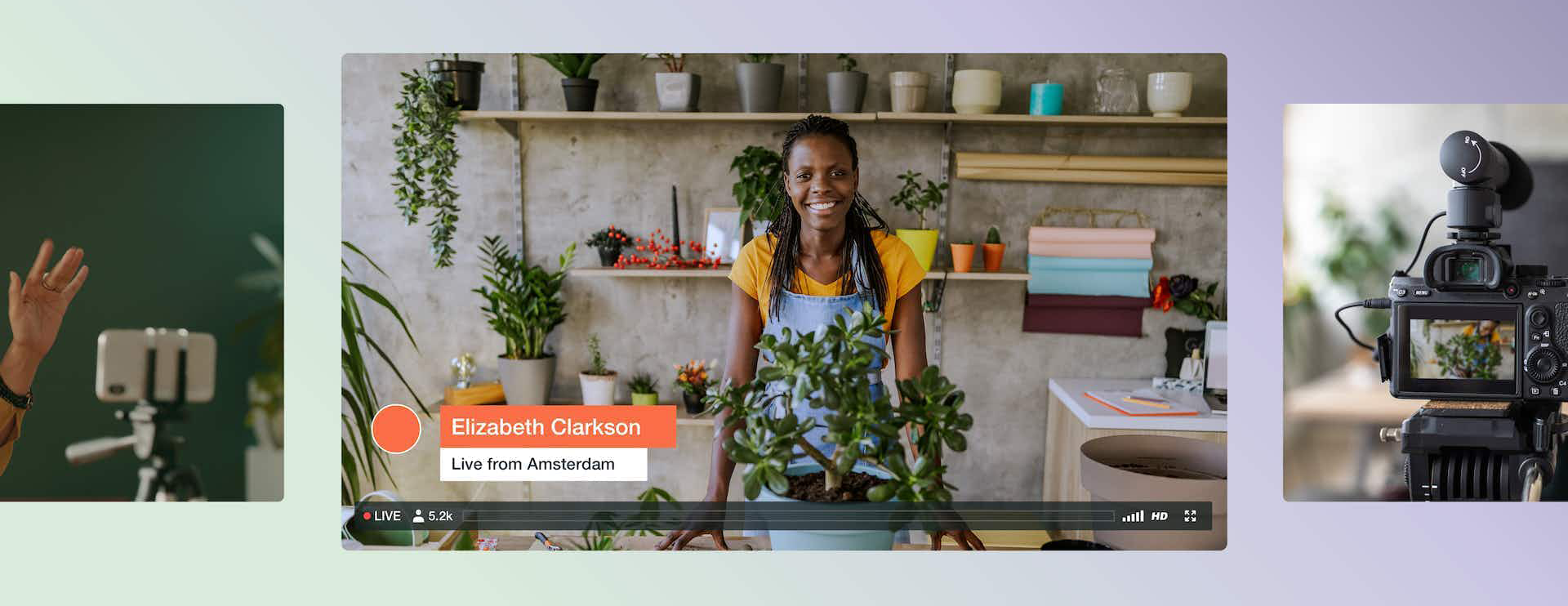Our friends at Vimeo have put together a comprehensive 4-step guide to set up a home studio for live streaming success. It’s easier than you think. “No need for expensive cameras, elaborate studios, or big production teams. Just a phone, webcam, or camera, and the right know-how.” Here is a quick breakdown of those steps for those willing to have a crack.
Step 1. Capture: Home studio equipment checklist
This step is all about ensuring your home studio is properly set up for live streaming. You don’t need to spend a fortune on equipment, but making a few small investments can go a long way in dramatically enhancing the quality of your event. Inexpensive LED light kits make it easier for your viewers to see your event and are flattering for the subject. Check out our lights for ideas.
High quality audio is essential to ensure a professional live streamed product. Audio issues can really detract from the quality of a live streamed production so make sure you have quality microphones if you’re going to make a real go at this. You don’t have to spend a fortune to buy quality.
It’s always preferable to have a steady camera for your home studio setup. You could invest in a tripod, or if you’re on a tight budget, you can also rest your camera against a steady surface — just make sure your camera is at eye level.
Step 2. Distribution: How to get viewers
How do you get people to attend your broadcast when you’re livestreaming from home? When you are looking at distribution, consider the goals of your event, where your target audience already is, and any privacy measures you may want to implement. Common distribution sources include:
- Hosting it public on the web
- Broadcasting to social media
- Simulcasting to multiple channels (e.g. Vimeo and Facebook)
- Embedding it on a private page
Step 3. Preparing tech recs for home live streaming
Sufficient internet bandwidth is essential for live streaming at home. Vimeo run through how to check your upload speed, which is how quickly you can send information from your computer out into the internet ether. It’s really easy to do and worthwhile — the higher your upload speed, the higher resolution you’ll be able to reliably stream. Search “speed test” online and run a speed test for free.
It is also recommended that you have a hardwired internet connection when you live stream from home. Even with a fast Wi-Fi connection, wireless signals can be unreliable, and may cause disruptions to your live streaming.
Step 4. Getting comfy on camera
Well done to you! You’re geared up and happy with the equipment and set-up at home. But being a great host takes a lot of practice.
If you’re interviewing guests, you want their story as well as their reactions. Practice all questions including follow-up questions. The best questions for livestreaming are straight-forward and direct. Listening carefully to responses is also key to making a successful product. Consider how you can create a story to keep the audience watching and listening.
Are you after more expert advice on how to produce a successful live stream from home? Contact us at info@thestreamingguys.com.au for more information, products and tips.
Click here for the full Vimeo blog post.

